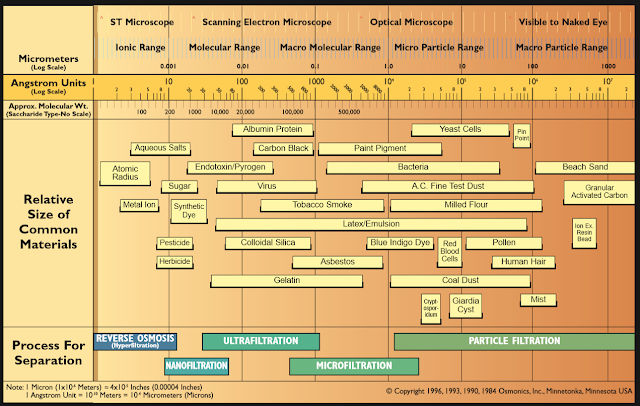When it comes to industrial filtration, a critical factor that should not be ignored is the micron rating. Micron ratings determine the ability of a filter to capture and retain particles of various sizes, making it a cornerstone of efficient and reliable filtration systems. Understanding micron ratings is essential for those operating in industrial environments, as it directly impacts the quality of the filtration process and the overall performance of their systems

What Are Micron Ratings?
Micron ratings refer to the size of the particles that a filter can capture. These ratings are expressed in micrometers (µm), and typically range from 0.1 µm to 1000 µm. The lower the micron rating, the smaller the particles that the filter can capture.
Why Do Micron Ratings Matter?
Micron ratings are important because they can determine the effectiveness of a filter. If a filter has a higher micron rating, it means that larger particles will be able to pass through the filter and remain in the system. This can lead to decreased filtration efficiency and potential damage to the system.
On the other hand, if a filter has a lower micron rating, it can capture smaller particles and increase filtration efficiency. This can help extend the life of the system and prevent costly repairs or replacement.
How to Select the Right Micron Rating for Your Filtration Needs
When selecting the right micron rating for your industrial filtration system, there are a few factors to consider:
Particle Size
The first factor to consider is the size of the particles that need to be captured. If you know the range of particle sizes present in your system, you can select a filter with an appropriate micron rating. For example, if the majority of particles are around 5 µm, a filter with a micron rating of 1 µm would be appropriate.
Flow Rate
Another factor to consider is the flow rate of your system. If the flow rate is too high for the filter, it can cause the filter to become clogged and reduce filtration efficiency. This can be especially important when using a filter with a low micron rating, as the small pores can quickly become clogged.
Filtering Media
The media of the filter can also impact the effectiveness of the filtration system. Different media are designed to capture different particle types and sizes. For example, a filter with a pleated design can capture more particles than a flat filter with the same micron rating.
Application
Finally, it’s important to consider the specific application of the filtration system. Certain systems may require filters with a specific micron rating to meet industry standards or regulations. For example, food and beverage industries often require filters with a micron rating of 1 µm or lower to meet sanitation regulations.
Common Micron Ratings in Industrial Filtration
There are several common micron ratings used in industrial filtration. Each rating has its own unique properties and is used for specific filtration needs. Here are some of the most common micron ratings:
- 1 µm and lower - typically used for high-purity applications such as food and beverage, pharmaceuticals, and electronics
- 5 µm - commonly used for general-purpose filtration
- 10 µm - ideal for capturing larger particles and protecting downstream equipment
- 30 µm - used for applications such as cooling tower filtration and pre-filtration for reverse osmosis systems
- 50 µm and higher - designed for applications such as protecting pumps, compressors, and other equipment from large particles
Micron ratings are an essential part of industrial filtration systems. Understanding how micron ratings work and selecting the appropriate rating for your specific needs can help improve filtration efficiency, prevent costly repairs, and extend the life of your system. If you’re unsure which micron rating to select, contact one of our filter experts who can help guide you through the process.